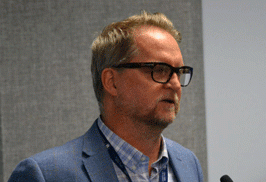Study published in leading American medical journal shares NOSM’s Indigenous application process
Posted on September 18, 2019
A Northern Ontario School of Medicine (NOSM) study, Tracking Indigenous Applicants Through the Admissions Process of a Socially Accountable Medical School, was recently published in the Journal of the Association of American Medical Colleges.
The team of NOSM researchers studied the School’s admissions over the course of 10 years to determine if it was meeting its social accountability mandate. The study examined the application and interview process from 2006 to 2015, and outcomes for self-identified Indigenous applicants. It took into consideration the applicant’s age, sex, rural background, admission scores, and performance during NOSM’s Multiple Mini Interview (MMI) process—an interview style used by some medical schools as part of their admissions process.
According to the research, Indigenous applicants to NOSM are two-and-a-half times more likely to receive an offer of admission, but three times less likely to accept it. The results also pointed out that Indigenous applicants are 2.4 times more likely to be interviewed, more likely to be female, over the age of 25, and from a rural Northern location.
“Each year, NOSM receives roughly 2,100 applicants for 64 spots,” says Dr. Owen Prowse, NOSM’s Assistant Dean of Admissions and one of six lead researchers of the study. “We know the self-identified Indigenous applicant pool is small, but it has steadily increased from two to three per cent over the last five years. This may not seem like a lot but this represents a 50 per cent increase in the number of Indigenous applicants meeting the NOSM admission criteria. This is very encouraging.”
Dr. Joseph LeBlanc is the Director of Indigenous Affairs at NOSM. He says this study provides unique guidance into the school’s ongoing efforts to improve the admissions processes for Indigenous applicants. “It’s encouraging that we’ve seen an increase in Indigenous applicants thanks changes in the process,” says LeBlanc. “Moving forward, we need to explore changes to increase acceptance rates. There is much we can learn from Indigenous learners and graduates who have gone through the School’s admissions process.”
The study also highlights that the number of Indigenous learners has gone up over the course of the 10 years. “Roughly seven per cent of learners were Indigenous, 20 per cent were Francophone, and 40 per cent were from rural and remote backgrounds. This was achieved while maintaining, even contributing to academic excellence,” Prowse adds. “Through the study, we learned that NOSM’s admissions policies and procedures are working to help the School achieve its goals. Importantly, we have been able to identify specific areas where we can do better.”
The study’s findings led to specific changes in NOSM’s admissions process. In particular, the group wanted to know why Indigenous students were three times less likely to accept an offer. “When we examined the reasons why applicants were declining our offer of admission, we discovered that it was not because they were not interested in studying at NOSM, rather the majority of these applicants were from outside of Northern Ontario and many received offers of admission at medical schools closer to where they lived and studied,” explains Prowse.
“Recognizing this, and the fact that Indigenous applicants from Northern Ontario were much more likely to accept our offer of admission, we adjusted the context score to reflect this and over the last three to four years, 80 to100per cent of offers to Indigenous applicants have been accepted,” Prowse says. “This is a good example of how we have been able to use this type of research to help make real, informed, impactful changes to the NOSM admissions process.”
The study also recommends that NOSM track the progress of Indigenous students as they graduate from medical school and move onto practice in rural communities, to help further assess the effectiveness of Indigenous admissions.
Prowse says the study can provide vital information for other medical schools in Canada, or other countries, who aim to increase the number of Indigenous medical student admissions, or increase numbers for those applying from rural or Northern areas.
The research team included: Dr. Oxana Mian and John Hogenbirk from the Centre for Rural and Northern Health Research; Dr. David Marsh, NOSM Professor; Dr. Owen Prowse; Miriam Cain, NOSM’s Director, Admissions and Learner Recruitment; and Dr. Wayne Warry, Director, Rural Health Initiatives at the University of Minnesota.
To read more about the study, visit The Journal of the Association of American Medical Colleges website.

